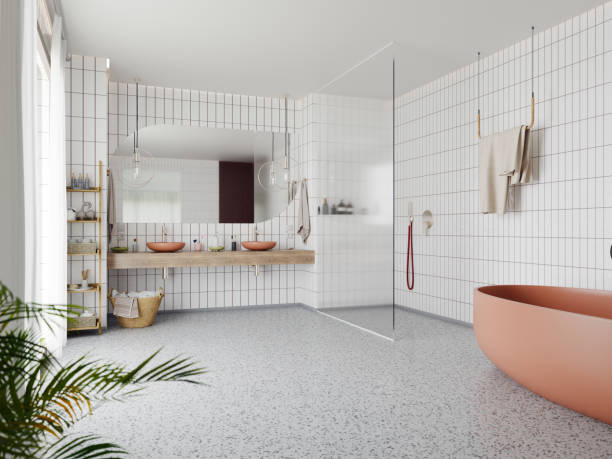


Epoxy flooring is a surface coating made from a combination of epoxy resin and a hardening agent.
Epoxy flooring has gained popularity in residential, commercial, and industrial spaces due to its durability, aesthetic appeal, and cost-effectiveness. This flooring solution is created by applying multiple layers of epoxy resin to a surface, resulting in a smooth, resilient, and high-performance floor. This article explores the various aspects of epoxy flooring, including its benefits, types, installation process, and maintenance.
Epoxy flooring is a surface coating made from a combination of epoxy resin and a hardening agent. When these components are mixed, they undergo a chemical reaction that forms a rigid, plastic-like material. This results in a durable and resistant flooring system that adheres strongly to concrete surfaces. Epoxy flooring is commonly used in garages, warehouses, hospitals, and commercial buildings due to its seamless finish and robust properties.
Epoxy flooring is highly durable and can withstand heavy foot traffic, impact, and mechanical wear. This makes it ideal for industrial environments and high-traffic areas.
One of the significant advantages of epoxy flooring is its resistance to chemicals, oils, and stains. This feature makes it perfect for laboratories, hospitals, and automotive shops.
Epoxy flooring is available in various colors, patterns, and finishes, allowing homeowners and businesses to customize their floors to suit their interior decor. Metallic and flake epoxy finishes offer a unique, high-gloss appearance.
Compared to other flooring types, epoxy requires minimal maintenance. Its non-porous surface makes cleaning easy, as dirt, dust, and spills can be quickly wiped away.
Epoxy flooring can be customized with anti-slip additives, ensuring a safer surface in workplaces or residential areas.
Epoxy flooring is an environmentally friendly choice as it reduces material wastage, lasts long, and requires minimal replacement compared to traditional flooring materials.
Epoxy flooring comes in various types, each designed for specific applications:
Self-leveling epoxy creates a smooth, even surface and is often used in commercial, residential, and industrial settings. It is ideal for repairing old or damaged concrete floors.
This is the most durable epoxy flooring option, composed of 100% solid epoxy mixed with graded quartz or sand. It is used in heavy-duty industrial environments.
This type of flooring combines epoxy resin with colored quartz grains to enhance durability and aesthetic appeal. It is commonly used in locker rooms, restrooms, and commercial kitchens.
Flake epoxy flooring incorporates decorative flakes within the epoxy layers to create a visually appealing surface. It also improves slip resistance.
Metallic epoxy creates a unique, three-dimensional effect by adding metallic pigments to the epoxy mix. This type of flooring is popular in luxury spaces and modern interiors.
Installing epoxy flooring involves several critical steps to ensure a long-lasting and effective application:
The first step is to prepare the concrete surface by cleaning it thoroughly and repairing any cracks or imperfections. Grinding or shot blasting is used to create a rough surface for better adhesion.
A primer coat is applied to the prepared surface to enhance adhesion and seal any pores in the concrete.
A base coat of epoxy resin is applied, which serves as the foundation for the flooring system. This coat determines the final color and appearance.
If a decorative finish is desired, such as flake or metallic epoxy, this step includes the application of flakes or metallic pigments.
A protective topcoat is applied to enhance durability, UV resistance, and chemical resistance. This also provides a glossy or matte finish, depending on preference.
The epoxy floor needs time to cure properly. Depending on temperature and humidity levels, curing can take 24 to 72 hours.
To maintain the longevity and aesthetics of epoxy flooring, follow these maintenance tips:
Regular Cleaning: Sweep and mop regularly to remove dust and dirt.
Avoid Harsh Chemicals: Use mild detergents for cleaning and avoid using abrasive chemicals.
Prevent Scratches: Place mats at entryways and use protective pads under heavy furniture.
Repair Damage Promptly: Address any cracks or chips immediately to prevent further deterioration.
